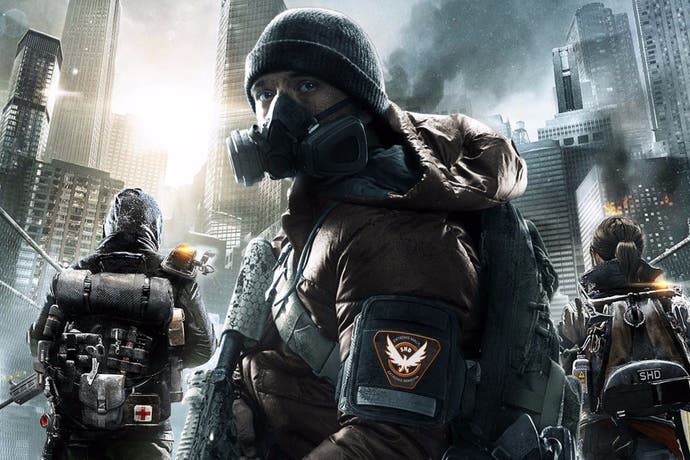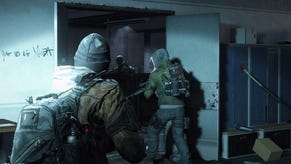The Division on Xbox One uses dynamic resolution scaling
The beta version's image quality under the microscope.
We had some interesting feedback to our initial article on The Division beta, which concluded earlier today. Pixel-counts pegged the Xbox One version of the game on par with the PS4 offering at full 1080p, yet many noted that image quality seemed noticeably softer in motion, even when both versions were set to the same image sharpness setting. Ubisoft's decision to extend the beta for a further 24 hours gave us a chance to revisit the game and after further analysis, what seems clear is that a dynamic resolution scaler is in effect on the Microsoft platform.
The idea here is straightforward: to maintain 30fps, the game lowers resolution in complex areas - typically on New York's ruined streets. This manifests as text appearing blurrier on distant signs, along with sub-pixel break-up on fine detail. Tellingly, this doesn't appear to be an issue at all on PlayStation 4 or PC versions of the game in matching shots.
Using the PC version as a comparison point, we explored various options: first of all, we cycled through all SMAA anti-aliasing variants available, including stabilisation and super-sampling temporal AA options. We even disabled SMAA completely, and used the Nvidia control panel to force FXAA, thinking that perhaps Ubisoft Massive applied a less expensive anti-aliasing technique to help maintain the Xbox One's creditable performance level.
But after a long process of deduction, the actual answer is rather simple - and discernible in the opening area of the beta, as soon as control is handed over to the player. It's clear from this viewpoint that Xbox One utilises a dynamic resolution scaler in order to sustain its target frame-rate, much like Halo 5 and Wolfenstein: The New Order. Essentially, this means that the game adjusts its resolution on the fly, dependent on GPU load in any given scene.
Wherever you see heavy volumetric effects and lots of geometry on-screen, there's a strong possibility that The Division's frame buffer is switching to a lower pixel count on Xbox One. It's a clever trick - and the exact moment of the switch can be hard to catch by eye. In practise, it does start to blur spots in the image in direct comparison to PS4 and PC, particularly across long distances.
So what exactly is the resolution? Well, the short answer is, it varies depending on the rendering scenario. In the opening shot, Xbox One drops to 1792x1008 as we look at the recovery camp ahead, as especially noticeable on a rooftop structure to its right side. This is still much higher than the 900p output we see in other titles, and it ultimately sits around 87 per cent of a full HD image overall. In other words, it isn't always a vast difference, but it's notable in explaining why we see certain details losing some definition.
The logic behind this dynamic resolution is easy to explain too. Inevitably, looking up to the sky in the same initial area - even slightly - to force the demanding elements of this scene out of view, the Snowdrop engine switches itself to a full 1080p. But as you'd expect, lowering the camera again (bringing all objects and fog effects into view) gets us back to 1792x1008.
The end result is an occasional softening of the image, and tends to occur around outdoor scenes as opposed to interior traversal and combat. In terms of the actual breadth of resolution changes, we've not had time to assess the full range utilised by the Xbox One beta - though the lowest figure we've logged comes in at 1728x972 (or 81 per cent of a full HD resolution).
For Xbox One owners, dynamic resolution adjustments may not be the best news, but the tech isn't unduly detrimental to the overall experience. In all, if a slight hit to visual quality helps to sustain the target 30fps frame-rate, clearly it's beneficial to the overall feel of the gameplay. During our tests, we found only a couple of pockets of dropped frames - and by and large the experience still runs at a level on par with the PS4 beta. Plus, of course, it's worth stressing this is unfinished code - and optimisations in remaining development time could lessen the necessity of this scaling.
As for PS4, it may be the case this scaling method is implemented on Sony's machine too. However, so far our tests reveal no performance drops whatsoever from the full 1920x1080 (or 30fps), and we'll have to judge this point on the final release. Meanwhile we'd love to see this technology deployed on PC in some fashion, where our GTX 970 and R9 390 tests show gameplay frame-rates can vary dramatically. A dynamic resolution could be a good back-up solution for those struggling to get by on their current GPUs on high settings - and also for PS4, should there be any issues in maintaining 30fps later on.
We'll have more coverage on The Division soon, specifically on the PC version of the beta. We'll be covering off image quality enhancements over the console editions, along with initial analysis on what it takes to run the game at 1080p60.



















